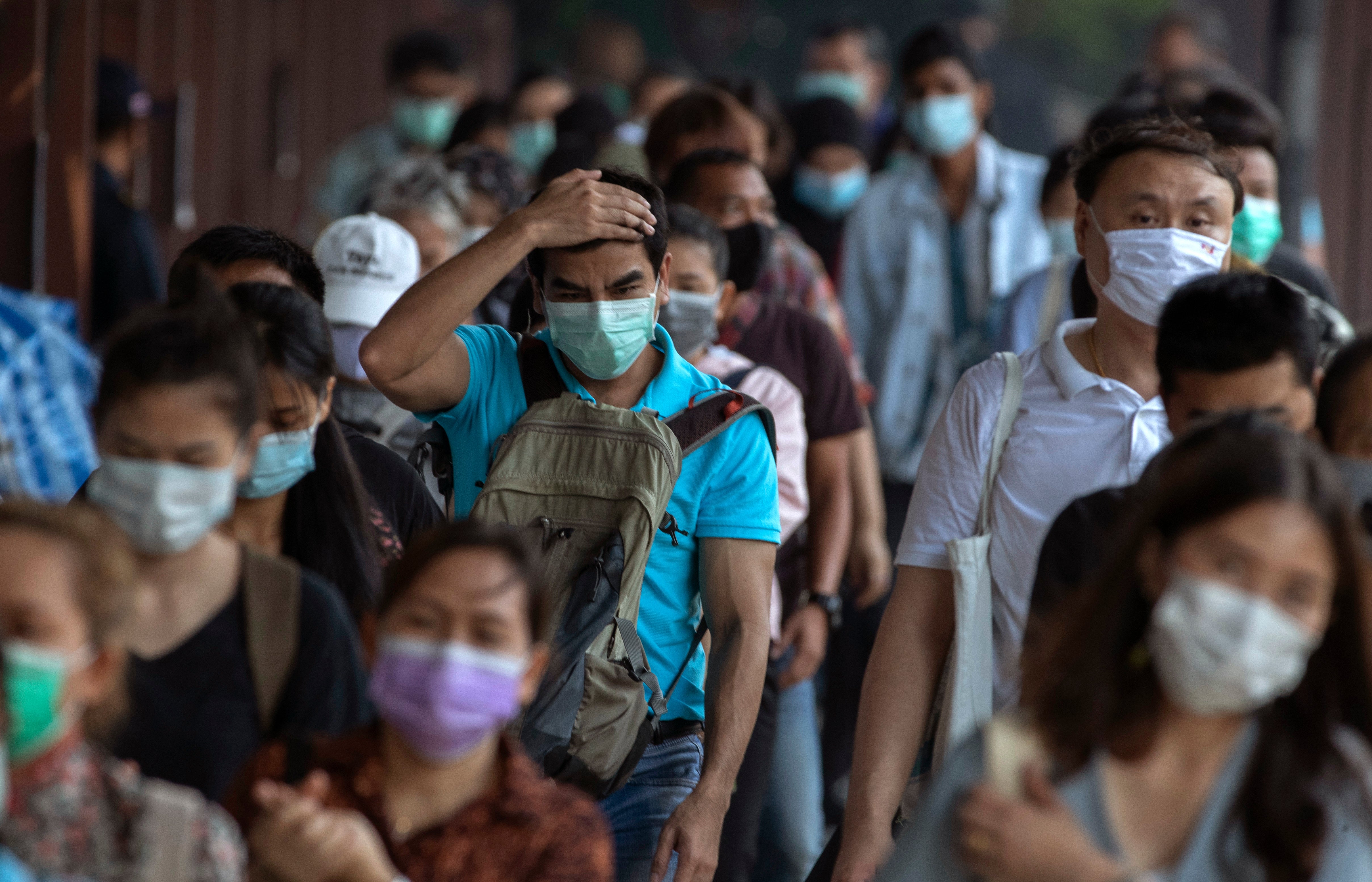The Latest: Duterte: 'Worst' to come before vaccines arrive
President Rodrigo Duterte said it’s uncertain when the Philippines can get adequate COVID-19 vaccines while warning more people will die and “the worst of times” is yet to come

Your support helps us to tell the story
From reproductive rights to climate change to Big Tech, The Independent is on the ground when the story is developing. Whether it's investigating the financials of Elon Musk's pro-Trump PAC or producing our latest documentary, 'The A Word', which shines a light on the American women fighting for reproductive rights, we know how important it is to parse out the facts from the messaging.
At such a critical moment in US history, we need reporters on the ground. Your donation allows us to keep sending journalists to speak to both sides of the story.
The Independent is trusted by Americans across the entire political spectrum. And unlike many other quality news outlets, we choose not to lock Americans out of our reporting and analysis with paywalls. We believe quality journalism should be available to everyone, paid for by those who can afford it.
Your support makes all the difference.MANILA, Philippines — President Rodrigo Duterte said it's uncertain when the Philippines can get adequate COVID-19 vaccines while warning more people will die and “the worst of times” is yet to come.
Duterte said his administration has done its best despite criticism and he could use emergency power, for example, to take over hotels if hospital room shortages worsen. But he said wealthy nations control the vaccine supply and other countries could hardly do anything but wait.
“When will we have that stocks sufficient to vaccinate the people? I really do not know. Nobody knows,” Duterte said in a televised meeting Thursday night with key Cabinet members. “I think before it gets better, we’ll have to go to the worst of times.”
“There’s no sufficient supply to inoculate the world. This will take a long time. I’m telling you many more will die here.”
The Philippines has received more than 3 million doses of Sinovac and AstraZeneca vaccines, most of it donated by China and through the COVAX arrangement by the World Health Organization. At least 1.2 million people have been given initial doses. The government aims to purchase at least 148 million doses to inoculate about 70 million adult Filipinos but the plan has faced supply problems and delays.
The vaccination delays have coincided with an alarming surge in coronavirus infections that the government has been scrambling to ease in the hard-hit capital and four outlying provinces.
The Philippines has long been a coronavirus hotspot in Southeast Asia with more than 904,000 infections and 15,594 deaths.
___
THE VIRUS OUTBREAK:
— China’s success at controlling the coronavirus outbreak leaves its public reluctant to get vaccinated
— Shortage of intubation drugs is the latest problem the pandemic has brought in Brazil
— China’s economic growth surged to 18.3% in 1st quarter, but the post-outbreak rebound is leveling off
— Louisiana is making a full-court press to get shots in arms, with creative outreach to make it easy to get vaccinated
— Follow AP’s pandemic coverage at https://apnews.com/hub/coronavirus-pandemic and https://apnews.com/hub/coronavirus-vaccine
___
HERE’S WHAT ELSE IS HAPPENING:
SACRAMENTO, Calif. — Gov. Gavin Newsom says nearly half of Californians eligible for vaccination have received at least one shot against the coronavirus.
He is urging more residents to sign up for appointments and not let apprehension get in the way of getting protected against the illness.
The nation’s most populous state on Thursday began vaccinating anyone age 16 and over regardless of occupation or health condition.
The move comes as California and other states have seen vaccine supplies rise in recent weeks. But officials are working to address hesitancy, particularly in some of the communities hit hardest by the pandemic.
___
NEW YORK — New U.S. government data show the country saw around 600,000 more deaths than usual during a 13-month span. COVID-19 was blamed for most of those deaths.
The Centers for Disease Control and Prevention released the estimate Thursday. It covers Jan. 26, 2020, to Feb. 27, 2021. COVID-19 was first detected in the U.S. in late January of last year.
CDC researchers said the biggest spikes in the deaths occurred in early April, late July, and the very end of December.
At least 75% of the deaths were directly tied to COVID-19, but the estimate includes deaths from all causes.
This week CDC released provisional data through the end of September 2020 that suggested drug overdose deaths for the year were far exceeding tallies seen in any previous year. The CDC said more than 87,000 deaths were reported over a 12-month period.